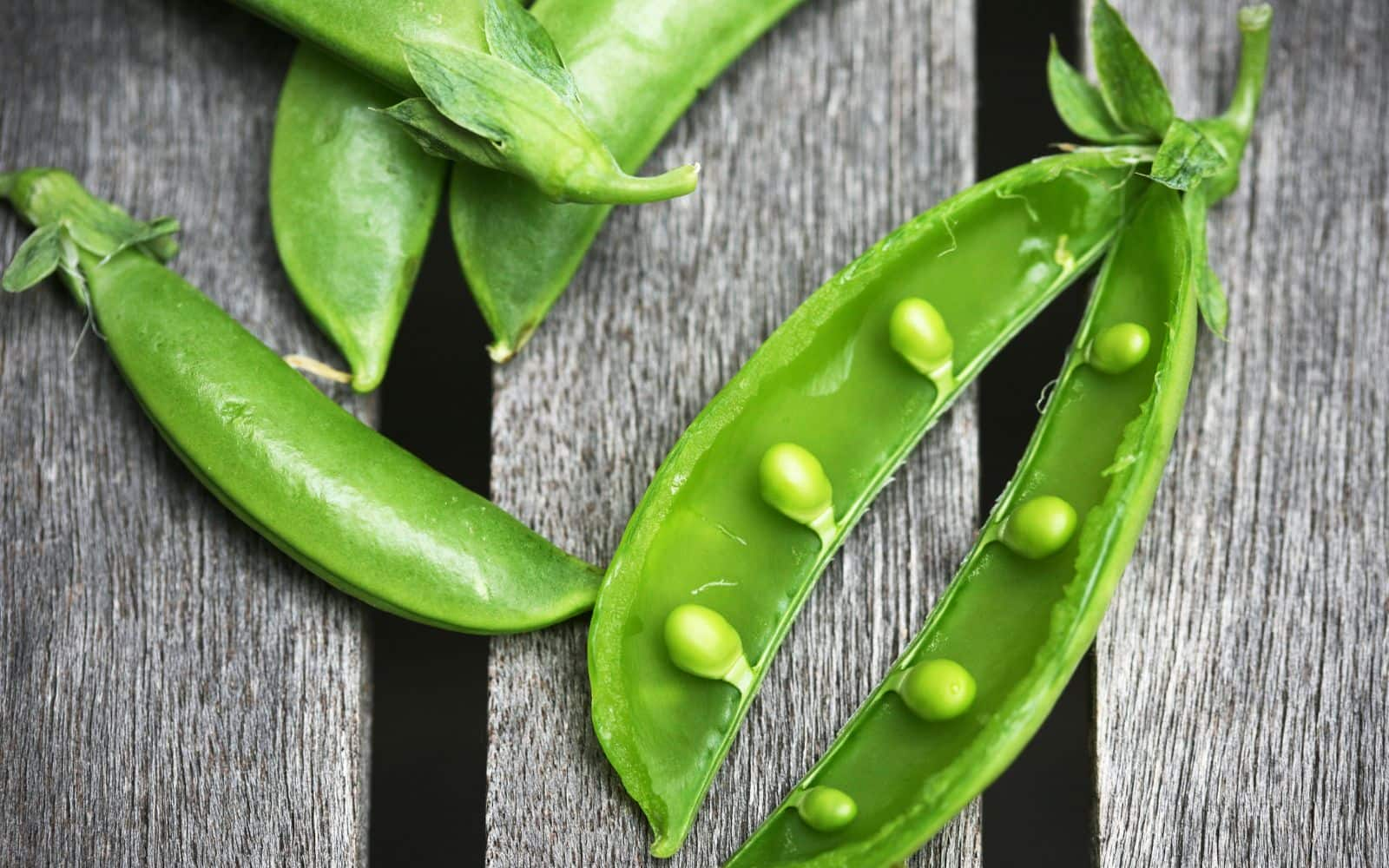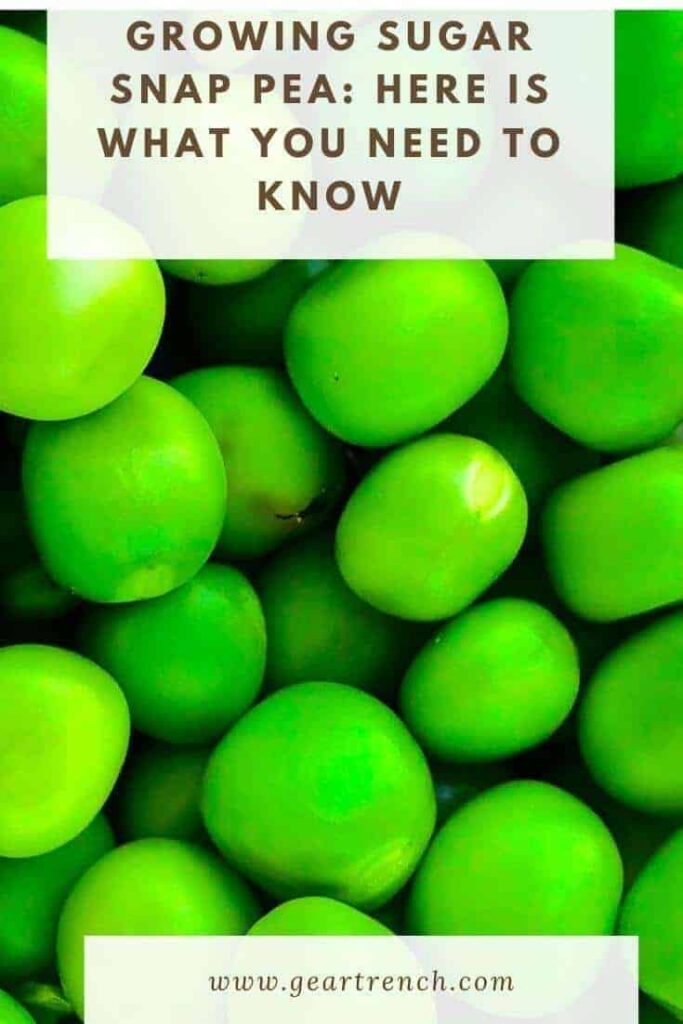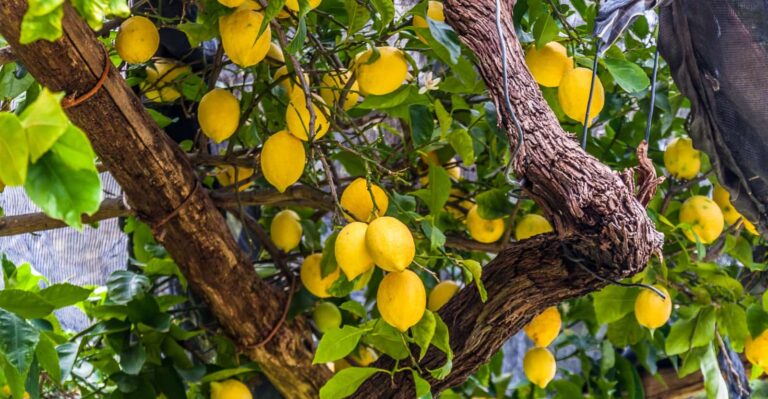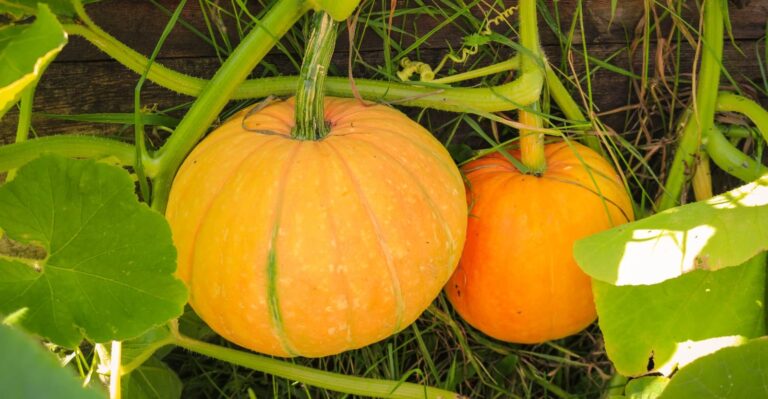Amazon has put together some great Home Gift Deals – save money and get your shopping done at the comfort of your home! Click here to see deals on Amazon
If you’re starting out with your own edible garden, then planting a sugar snap pea is a great way to get natural, low-maintenance, vegetables.
And the best part:
You can grow almost anywhere.
To help you with your edible home gardening, we are providing all the information you need for growing sugar snap peas.
Quick Gardening Facts for Sugar Snap Peas
Sugar snap peas (Pisum Sativum Var. Macrocarpon) are a very delicious and sweet vegetable that is a part of the bean family. There are many health benefits of sugar snap peas, and due to their flavors good taste, the kids enjoy eating them too.
The sugar snap peas have weak stems and need support to climb. In each pea pod, there are approximately 6 to 10 peas. English and snap peas are grown for big and mature peas in the pods.
Types of Sugar Snap Peas
There are several different types of sugar snap peas available, depending on the climate and the growth environments. But there are three main varieties of sugar snap peas.
Sweet Peas
These are soft and sweet flavor varieties. The pods are hard and not edible, but the peas are mushy and delicious.
The most common sweet peas varieties are Oregon Trail, Coral, and Green Arrow. If you are planting peas in hot weather, then use Little Marvel or Wando which are more heat resistant.
Snow Peas
The Snow peas are very soft and bright green in color. You can eat both peas and pods. The pods are flat and have medium size peas inside them.
You don’t split open snow peas, but you stir fry the whole pea. If planting in a colder region, use Oregon Giant or Dwarf White Sugar, which is suitable for stir-frying.
Sugar Snap Peas
Like snow peas, it has edible peas and pods. The main difference is the size. The sugar snap peas are more extensive and rounder than the snow peas.
If you are planting in the early season, you can plant Burpeeana Early, Maestro, and Sugar Bon. For Mid-seasons, you can plant Mammoth Melting Sugar and Oregon Sugar Pod. In the late season, you can plant Wando and Alderman.
How to Grow Sugar Snap Peas
People often ask questions such as “When do I plant peas in Zone 5?” Well, sugar peas are not overly dependent on the planting zone. It grows in 3-11 planting zones on the USDA hardiness scale. You can expand zones beyond those, but you may have to do more care.
If you have not grown the peas or beans in the area before, it may be helpful to treat it with Nitrogen-fixing bacteria (Rhizobia Inoculation).
You can easily do it by coating the pea seeds with inoculant by dipping the seed in the solution. But if you have already planted the seed, then you can lightly sprinkle the inoculation in the ground.
Be careful with water after planting the seed. Keep the water pressure low, as it may move the loose soil and wash away the seed.

Sugar Snap Peas Growing Season
The planting time of sugar snap peas is the key to getting the proper yield. The snap peas growing season is in the spring. It produces best when the weather is a bit cold and moist.
Planting peas in the early shallow temperature season will cause them to frost. And planting too late may cause the heat to destroy it. Based on where you live and the temperature in the season, you can start planting peas around the mid of February.
You should aim to plant peas around 4 to 6 weeks before the last frost when the soil temperature is around 45-degree Fahrenheit.
You can check out the planting schedules to get the planting time idea based on your planting zone. Peas grow faster when there is good moisture in the atmosphere. But be careful with the too much-wet ground as it may damage the seeds.
Read More: How Many Pumpkins Per Plant: Things You Need to Know?
Growing Sugar Snap Peas In The Fall
You can plant sugar snap peas in the fall as long as the temperature does not fall several degrees below the freezing point. You can plant in the fall when there is high moisture in the air.
Sugar snap peas can tolerate cold weather and mild snowfall. The seed germination will not be adversely affected by light snow.
But if the temperature remains below freezing for several days, it may cause the soil to get frost, which prevents germination. You have to replant the pea in that case.
When planting sugar snap peas in the fall, plant them 6 to 10 weeks before the frost sets in. It will give the pea enough time to grow and allow you to harvest.
Once the frost happens, the pea plant dies, and you can pull it out and wait for the soil to thaw for the next plantation. Most often, the fall pea harvest produces less yield than the peas planted in the summer.
We also recommend that you rotate your crops to maximize the yield.
Growing Sugar Snap Peas In The Summer
You can plant sugar snap peas in the summer if the temperature does not get too hot. Peas need good moisture, and you may have to water it often to retain the moisture in the soil.
The Ideal Temperature To Grow Sugar Snap Peas
The ideal temperature to grow sugar snap peas is between 45 degrees to 70 degrees Fahrenheit. Temperature above or below the growing range reduces the pea yield or prevents the plant from growing at all.
For people living in colder climates planting peas around April may work best. If you live in more warm weather, then start planting peas in mid of February.
How To Grow Sugar Snap Peas: In Easy Steps
Sugar snap peas are easy to grow. It doesn’t need many resources or attention as long as some basic requirements are met. Here is how you can start growing sugar snap peas.
Prepare The Soil
Soil is the necessary foundation of growing peas. Check the ground for the right condition before you get started. The soil pH level has to be between 5.5 to 7, and it should be well-drained. The peas need humus soil, but too much waterlogging may rot the pea seeds.
You can use organic fertilizers or compost to bring the soil pH level to the ideal growing range. There are several pH soil tester meters available which you can buy, and these are usually relatively cheap.
Growing Sugar Snap Peas From Seed
Once the soil is ready for planting, start preparing the garden bed. As a precaution, check out the weather to make sure there is no severe weather change forecast, which may prevent pea germination.
If everything goes as planned, plant the sugar snap peas four to six weeks before the final frost. Dig up multiple parallel rows on the garden bed and plant each pea seed 1.5 inches deep.
Maintain approximately one-inch spacing between each pea plant. Depending on how many sugar snap peas you are planting, you can plant them in either single or double rows.
For planting sugar snap peas in a single row, maintain each row to be between 19 to 25 inches apart. For double rows, keep the distance of eight to ten inches.
The proper spacing of pea seeds is essential to allow enough space for the pea plant to grow. It’s crucial that each plant gets enough nutrients, air, and sunlight without invading the neighboring plant.
Sugar Snap Peas Germination Time
Sugar snap peas germinate roughly between 7 to 14 days. The germination time may be affected depending on the weather and soil condition plus the overall seed health.
To prevent any germination problem, we recommend that you sprout it indoors before planting it in the garden. You can easily do it by wrapping the pea seeds in a wet cloth and placing it in a warm spot. Once the peas seed sprouted, you can plant it in the garden.

Growing Sugar Snap Peas In Containers
It’s ideal for growing smaller size varieties of sugar snap peas in containers for a limited number of plants. You will be restricted to growing snap peas based on the size of the container and the maximum plant height.
Sugar snap peas don’t like too much water. Pick a container that has drainage for excess water underneath it. Use nitrogen-rich soil in the bowl.
Snap peas like full sun, so plant it in a container that allows you to move it quickly if it gets too much shade or getting too much sunlight.
To increase the sweetness of sugar snap peas, place it in a bit cooler area or shade while giving it enough full sunlight. Maintain the loose and well-drained soil in the container. You can amend the soil with organic composts.
When planting the peas in a container, don’t overcrowd it. Keep in mind that peas don’t like to be transplanted. So, if you are germinating snap peas in an indoor pot, then plant them as soon as it starts sprouting.
How to Care Sugar Snap Peas
Sugar snap peas are low-maintenance plants and need very little care. As long as the weather remains on your side and you have soil composition right, there is nothing much for you to do rather than wait.
But you can increase the yield and get better quality sugar snap peas with some more attention and care to your plant.
Here is how you can care sugar snap peas:
Remove Weeds
Weeds are natural to grow around the plants due to the water, and fertilizers you provide to your plant. Weeds steal the resources and nutrients you provide to your pea plant. So, it’s just that you remove as much as weeds as possible.
The most efficient way to remove the weeds starts with soil preparation. When preparing the soil, make sure there are no weeds in it.
If you are putting an extra layer of soil, make sure it’s free from weed seeds. You can filter the dirt to remove any visible weed seeds.
Be careful with removing the weed after you have planted the pea seed and the germination has started. The pea roots are very shallow and can be easily uprooted if you start pulling out the surrounding weeds or use a hoe.
Adequate Fertilization
Peas need the right nitrogen level in the soil for proper growth. But it doesn’t mean that you have to fertilize it often.
If you have used organic compost or fertilizer during the soil preparation stage, that should be enough to provide the required nitrogen and other nutrients to the pea plant.
Adding excess fertilizer or nitrogen may actually harm the pea plant so use fertilization sparingly.
Water And Moisture
Try to maintain reasonable water and moisture level in the soil. It may be possible that you don’t have to water for more than a week or so as the weather may have enough moisture level in it.
To decide whether you need to water your pea plant, look at the plant leaves. If it looks yellow and dry and the soil is becoming hard, then moisten the plant otherwise wait for it to water another day.
In most cases, water the pea plant half-inch per week at the germination stage. Once the pea plant blooms and you get flowers, then increase the water to an inch per week.
Mulch The Surrounding
Mulching areas surrounding the pea plant help control the weeds and allow the air and moisture to remain in the soil. This will prevent the pea roots from getting dried out due to excessive moisture loss.
Growing Sugar Snap Peas On A Trellis
Sugar snap peas are soft plants and need proper support if you want to maximize the land space used. Based on the growing spread of peas, there are two most common types. These are climbing sugar snap peas, and bush-type sugar snaps peas.
Most of the time, you can get better yield and quality by growing it on the trellis. The support provides the peas to grow upward, which helps them to get better sunlight and airflow to the plant roots.
The bush-type sugar snaps pea variety does not grow very tall as it goes up to 2. to 3 feet tall. With no support, the pea plant falls on the ground and spread out.
The climbing sugar snap peas have a stronger stem and can grow up to 6 to 8 feet tall. You can use sturdy and durable trellis support to raise the pea plant. The pea plant wrap around which can be either trellis or other bigger plants to climb.
When choosing trellis, look for spacing that is at least a quarter-inch and the around 8 to 10 feet tall. You can plant the peas on both sides of the grille to provide support.
For shorter 3 to 4 feet in pea plant height, use trellis which are in same 3-4 feet in length. Make sure the grill is durable and provides the proper support to pea vines.
Most of the sugar snap peas take around 2 to 3 months to get ready for harvesting. You can shorten or wait longer for collection depending on your need during these periods.
Sugar Peas Companion Plant
The companion plants help in the growth of sugar peas. You can plant, beans, carrots, lettuce, melons, spinach, and turnips as useful companion plants.
You should not plant, onions and garlic with the sugar peas plant as it impacts the growth of the pea plant.
Pest and Diseases of Sugar Peas
Peas are quite robust and not very much prone to insects and diseases. But following are the common threats to the pea plants.
Aphids
Aphids are small bugs that are ferocious eaters. These bugs eat the small and delicate pea leaves and flowers. The sticky sweet residue left by the aphids attracts other insects, which further destroys the pea.
You can check if the pea is infected with aphids by looking closely at the plant. These are very light green colored which makes them blend with the plant and it’s hard to locate them from a distance.
Most often, when the peas are infected by Aphids, the leaves start becoming discolored and get twisted.
To get rid of aphids, either wash it out with high-pressure water or spray insecticide. Be careful with high-pressure water as too much pressure can damage the plant itself.
When using water to clear the plant from Aphids, spray it at the foliage rather than at the root of the plant.
Groundhogs
The groundhogs are rodents that can destroy the peas at their germination stage or during the harvest. The groundhogs look like a squirrel, and they make a burrow and live underground.
The most common prevention technique is to put a fence around the garden and fill up the burrows.
Fusarium Wilt
Fusarium Wilt is a fungus that starts from the ground level. Once taken hold, it spread to the pea roots and destroys the source which makes the plant to get either get weak or die.
To treat Fusarium Wilt, you can use fungicides to kill it. Check and remove any pea plant which seems to be infected with this fungus. This will prevent the further spread of the fungus to other peas plants.
High nitrogen level soil is more prone to get attacked by Fusarium Wilt fungus, so maintain the optimum nitrogen level in the land. You can do it by not over-fertilizing the pea plant.
How To Harvest And Store Sugar Peas
Harvesting sugar peas are fun and easy to do. Once you determine that there is a sizeable pea in the pod and ready to harvest, start plucking it as frequently as possible. You can quickly learn if pea is matured by touching and feeling the pods.
Harvest-ready pea pods have a subtle sheen and have a bright green round shape. If you don’t harvest it on time, the seed starts to thicken and gets dull green color and rough shell.
For the best result to get sweet and soft peas, pick it when the pod is still soft, and you can move the peas inside with a little pressure.
Note: If you are harvesting snow peas, harvest them before the peas get too big as then it does not taste good.
If you have used trellis to support the sugar peas, then hold the stem and pull the peas. Be careful not to damage the plant. Picking stimulates growth, and you get more peas as you continue to pick them.
Use both hands when picking sugar peas. Support the foliage with one hand while you pull it from others. This will prevent uprooting the pea plant or damaging the stem.
You get a continuous supply of peas during the harvesting time. You can pick on alternate days, which increases the yield. Pay attention to peas, which are close to maturity as if remain unpicked, it reduces the yield.
After picking, you can store it in the fridge. It will remain suitable to eat for the next five to seven days. For saving it more for an extended period, you can freeze it after washing and cleaning it properly.
You can also dry the peas and store them in a sealed container to use in soups. It won’t taste as good as a fresh pea, but you will be able to enjoy it long after harvesting.
Healthy And Delicious Peas Recipe
Here are some delicious pea recipes which you can prepare at home.
Sugar Pea And Feta Salad
The benefit of sugar peas is that you don’t have to spend a long time preparing and cooking them. You can quickly make a bowl full of nutritious pea salad in a short time.
The Pea and Feta Salad recipe is easy to make, and kids and adults love it. Get this recipe from here.
Healthier Sugar Snap Pea And Chicken
Do you want some protein with sugar snap pea? Check out this mouth-watering recipe which you can prepare for your kids to eat before they head outside to play.
Conclusion
There you have it. All the information you need to know to start growing sugar snap peas. The peas are delicious and contain nutrients such as vitamins, fibers, and minerals. This makes it great for eating with several health benefits.
If you have any questions or suggestions, then let us know in the comment below.

Don’t forget to share this post







